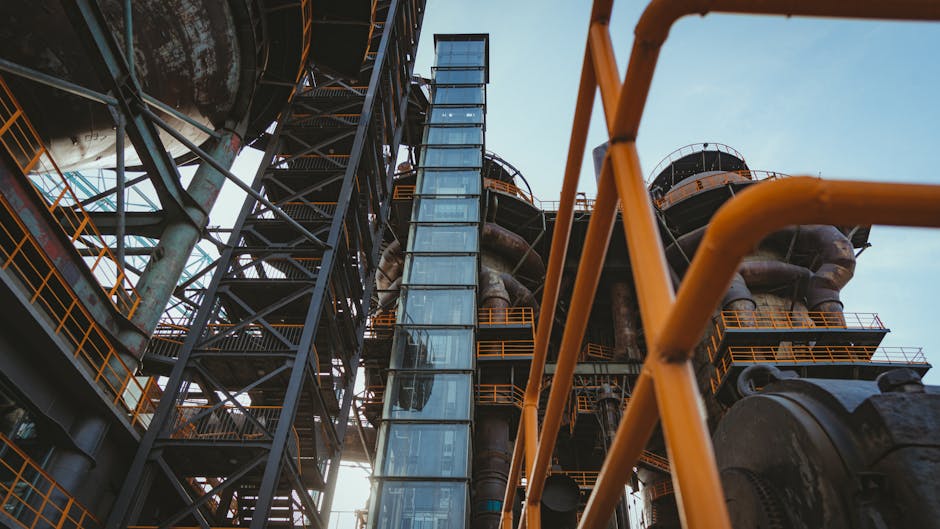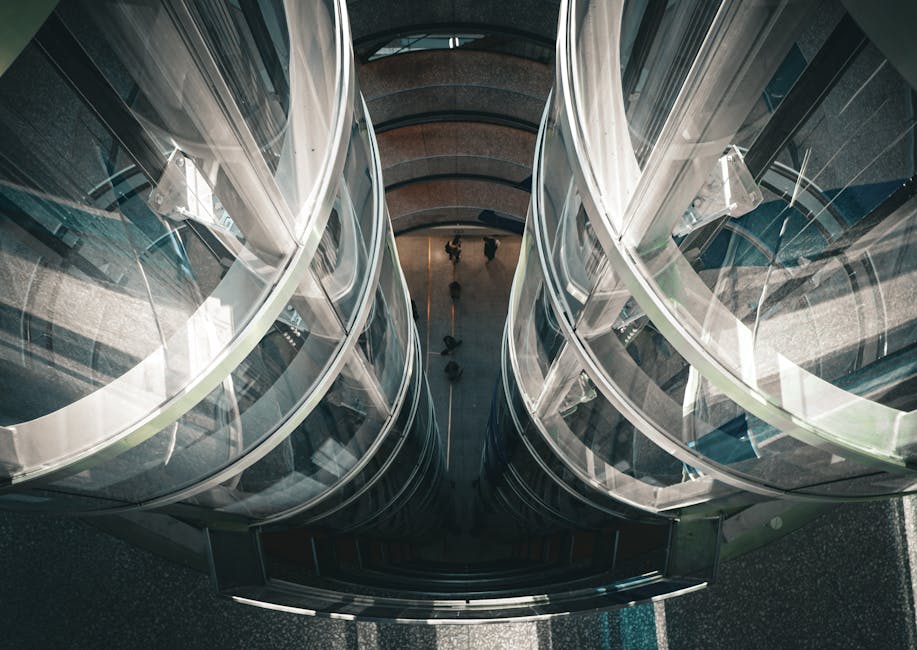Selecting an elevator system is one of the most consequential decisions for any high-rise or mixed-use building project. At Kaiser Elevator, we are often called in at the earliest planning stages by developers, architects, and building owners seeking not just vertical transportation, but a tailored solution that balances performance, compliance, aesthetics, and lifecycle value. The traction vs. hydraulic elevator choice isn’t just technical—it impacts your building’s flow, code compliance, long-term operational costs, and even market appeal. Here, we share what we believe every project stakeholder should know before making this critical decision.

Understanding the Core Difference: Traction vs. Hydraulic Elevators
While both systems transport people and goods from floor to floor, the way they operate, and where they excel, are fundamentally different:
- Traction Elevators: These lifts are powered by electric motors pulling steel ropes or belts over a pulley. They deploy a counterweight to move the cab up and down efficiently and can be designed with or without a machine room.
- Hydraulic Elevators: These operate using a piston that lifts the cab by pushing hydraulic fluid into a cylinder. Most hydraulic elevators require a machine room at the base and are limited by pressure, travel distance, and speed.
Suitability for High-Rise and Mixed-Use Applications
Where Traction Elevators Are Essential
- High-Rise Buildings: Traction elevators are a must for buildings over six stories or 60 feet. The system is designed to handle much greater travel heights without compromising speed or comfort.
- Mixed-Use Developments and Heavily Trafficked Properties: These systems are engineered for frequent use, rapid vertical movement, and maximum passenger throughput. Modern traction elevators also provide smooth, quiet rides and can feature destination dispatch for efficient traffic flow.
- Energy Efficiency and Ride Quality: Counter-weighing cuts down power use—often delivering 25-40% energy savings compared to hydraulic systems for similar usage.
- Longevity: Traction systems face less mechanical strain over time, giving them a longer service life and reducing lifecycle maintenance costs.
Where Hydraulic Elevators Still Shine
- Low- to Mid-Rise Buildings: For most buildings up to 6 stories, hydraulic elevators are a robust, budget-friendly option.
- Heavy Duty Loads: Hydraulic systems can provide higher capacity for specific demands (like hospital or service use) in low to mid-rise contexts.
- Retrofits: Holeless hydraulic elevators require less shaft depth and overhead space—making them a practical solution for some retrofits or unique building footprints.
- Shorter Installation Time: Typically, hydraulic systems can be installed faster and at lower up-front cost compared to traction counterparts, which can help streamline schedule-sensitive projects.

How We Advise You to Decide: Detailed Selection Criteria
Our process starts with a collaborative assessment, focusing on:
- Building Height, Travel Distance, and Future Expansion
- Buildings taller than six stories, or with high expected usage, almost always require traction systems. Hydraulic elevators are limited by pressure and pit depth constraints, seldom exceeding 60 feet of travel effectively.
- People Flow, Wait Times, and User Experience
- High-rise or mixed-use buildings experience peak-time congestion. Traction elevators can move quickly (up to 2,000 feet/minute), reducing wait times and increasing satisfaction for residents, employees, or visitors.
- For smaller buildings with light traffic, hydraulic systems are adequate and can still provide a comfortable ride.
- Project Budget and Lifecycle Costs
- Hydraulic elevators appeal for lower installation costs (up to 30% less) and reduced construction complexity, but their higher ongoing energy use and more frequent maintenance needs generally make them costlier in the long run.
- Traction systems have a higher up-front investment, but deliver better total value over time due to efficiency and longevity.
- Shaft Space, Machine Room, and Structural Constraints
- Modern traction elevators can be machine-room-less, freeing up valuable rooftop real estate. Hydraulic options may be essential when limited pit or overhead space prevents traction installation—but at the expense of height and speed.
- Compliance and Safety
- Large or high-rise projects must comply with stringent NFPA, ASME, ADA, and local regulations. Traction elevators offer broader compliance, especially for fire and seismic requirements. For deep dives into code and compliance changes, see our elevator safety code update guide.
- Sustainability and Environmental Impact
- Energy-efficient gearless traction systems and regenerative drives significantly reduce environmental footprint. While modern hydraulic fluids are more eco-friendly, the core system remains less efficient for high-use settings.
In-Depth Comparison: Traction vs. Hydraulic at a Glance
| Criteria | Traction Elevator | Hydraulic Elevator |
|---|---|---|
| Typical Uses | High-rise, mixed-use, offices, residential towers | Low/mid-rise, heavy-duty, retrofits |
| Travel Height | No practical limit (ideal for 6+ stories) | Up to approx. 60 feet (holed), ~40 feet (holeless) |
| Speed | Up to 2,000 ft/min (very fast) | Typically up to 150 ft/min |
| Energy Use | More efficient (~25-40% lower) | Higher, especially frequent use |
| Install Time | Longer (adds up to 4–6 weeks) | Shorter (saves 4–6 weeks) |
| Up-front Cost | Higher | Lower |
| Maintenance | Lower over lifetime | Higher in high-use settings |
| Noise Level/Ride | Smoother, quieter | Noisier, less smooth |
| Environmental Impact | Low with modern tech | Improved, but still higher |
Project Delivery Insights: Our Perspective
As value-focused elevator consultants and installers, we invest time upfront in understanding your project’s traffic studies, architecture, and long-term plans. We commonly recommend:
- For high-rise and dense mixed-use buildings: Gearless traction elevators with destination dispatch and advanced control packages. These maximize returns on staging, traffic flow, and lifecycle investment.
- For retrofits and budget-sensitive mid-rises: Custom hydraulic or “holeless” hydraulic systems that minimize impact on existing structures. These still meet all code requirements when heights and usage patterns fit.
- For more on the cost, compliance, and scheduling challenges of modernization, see our guide on key considerations for elevator modernization.
Frequently Asked Questions for Stakeholders
- Can I combine both systems? Yes, large projects sometimes employ hydraulic systems for service/freight and traction for passengers. Proper design coordination is essential.
- What if I want to increase building height later? Traction elevators are prudent if future expansion is part of your vision.
- Will code changes affect my choice? Absolutely. Local, state, and federal codes (including accessibility, seismic, and fire) can drive design. Partnering with a team (like ours) that incorporates ongoing code updates into every package can save headaches and delays. For an in-depth code update overview, see our recent blog on elevator safety code updates.
- What’s the typical service life? With proper maintenance, both systems should last 20–30+ years. Traction elevator systems often outlast hydraulics when usage is intensive.

Our Approach: Tailoring Elevator Solutions for Your Project
Our service extends well beyond specifying equipment. We provide hands-on support from design and engineering to installation and long-term maintenance, ensuring:
- Every component is code-compliant and value-engineered to your goals
- Installation is seamless within your construction schedule, minimizing risk and timeline overlap
- Full customization options for cabin interiors, finishes, controls, and accessibility features
- Proactive warranty and 1-hour service call turnaround to maximize uptime, especially critical for hospitality, residential, and healthcare properties
- Lifecycle cost modeling so facility owners can plan upgrades, modernization, or expansion down the road
Learn more about our full spectrum of precision-engineered elevator services or browse our commercial elevator options.
Conclusion: Why the Right Partner Matters
Choosing between traction and hydraulic elevator systems is a nuanced decision, shaped by your building’s size, use, budget, and future plans. At Kaiser Elevator, we treat every project as a partnership, delivering not just equipment but reliable, code-compliant, and future-proof vertical transportation solutions.
If you’re navigating this choice for your development, reach out to us at Kaiser Elevator for a custom assessment, code review, or lifecycle analysis. We’re here to help you elevate your project with clarity and confidence.
Contact Kaiser Elevator for expert guidance, tailored solutions, and end-to-end support—trusted by property owners and developers across New York, New Jersey, and beyond.

